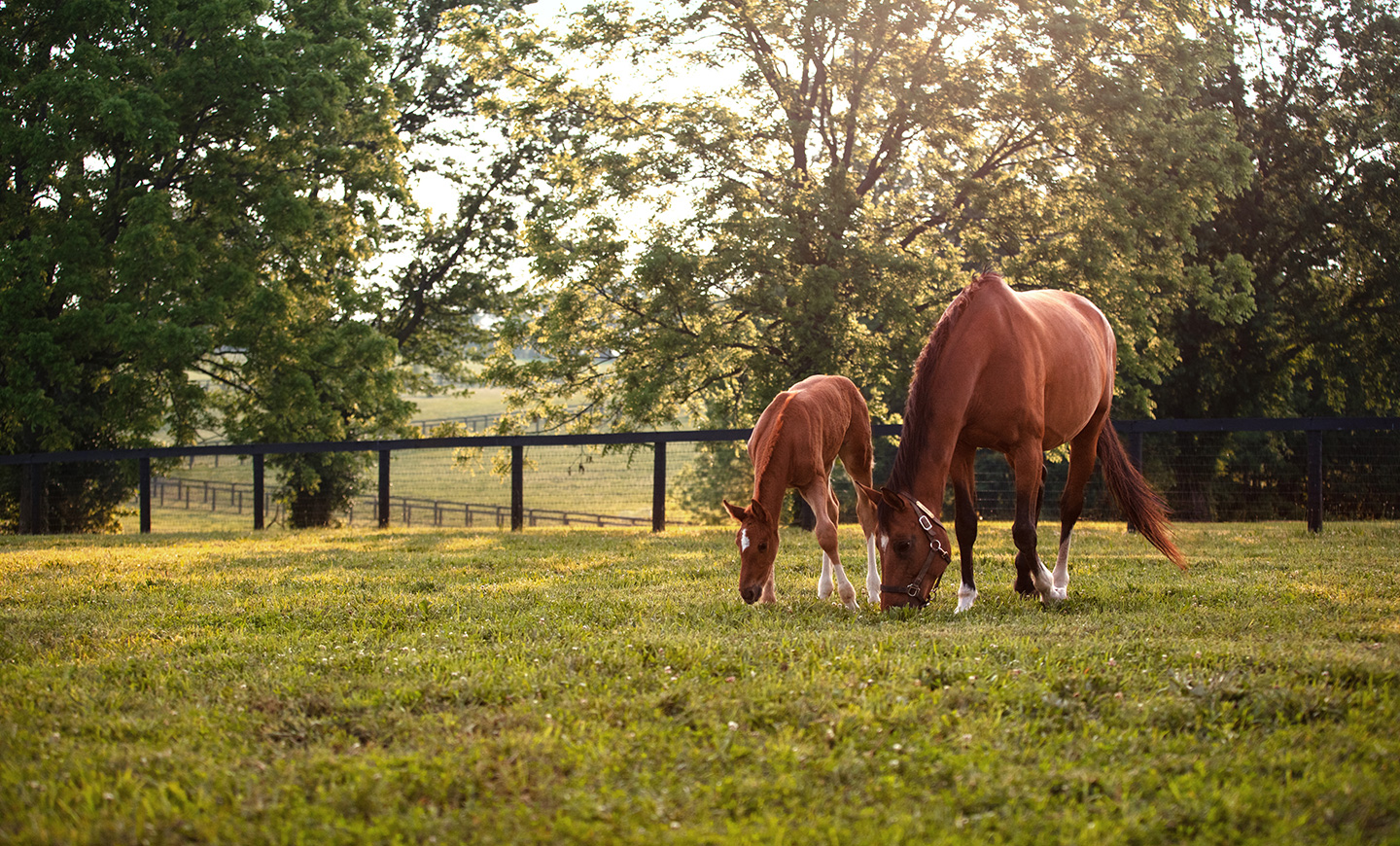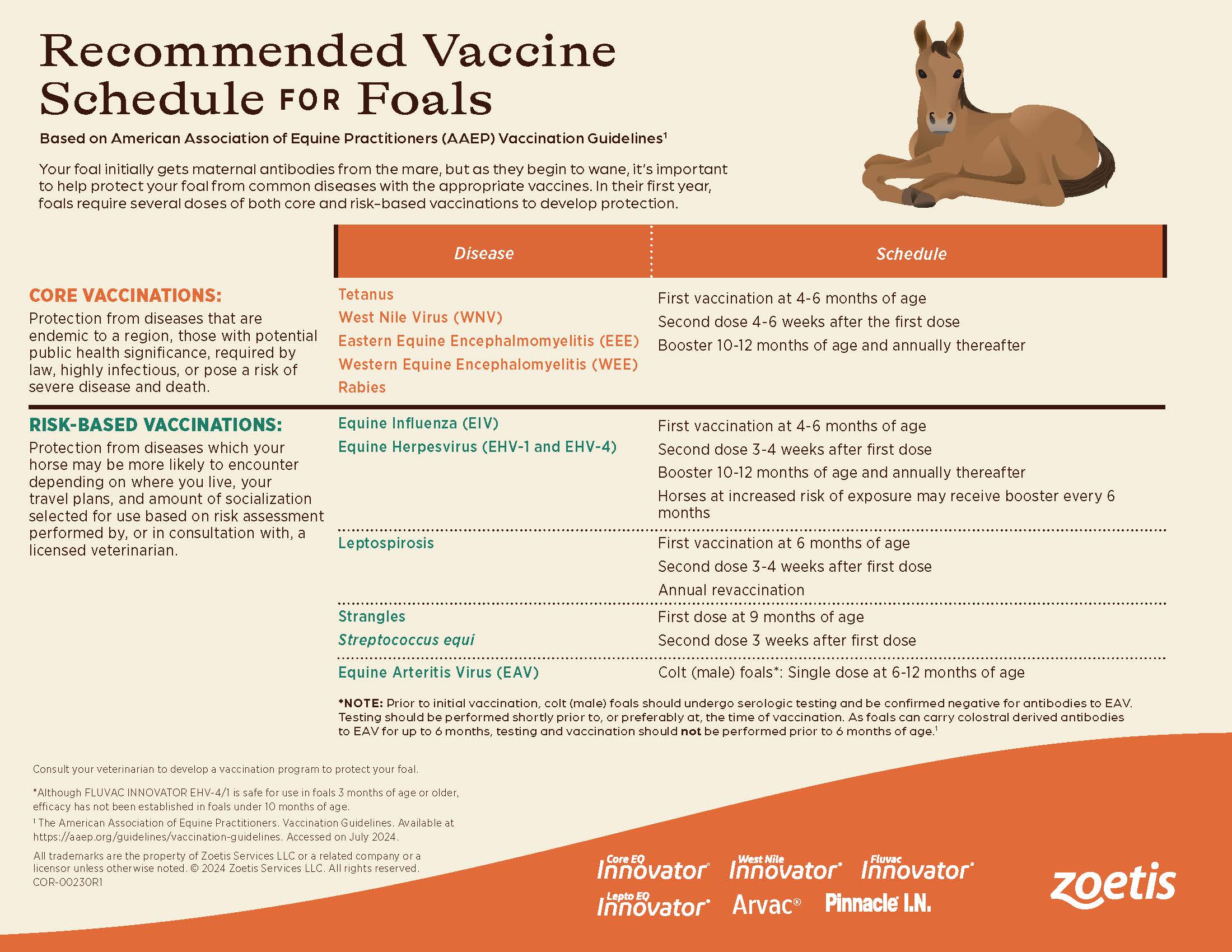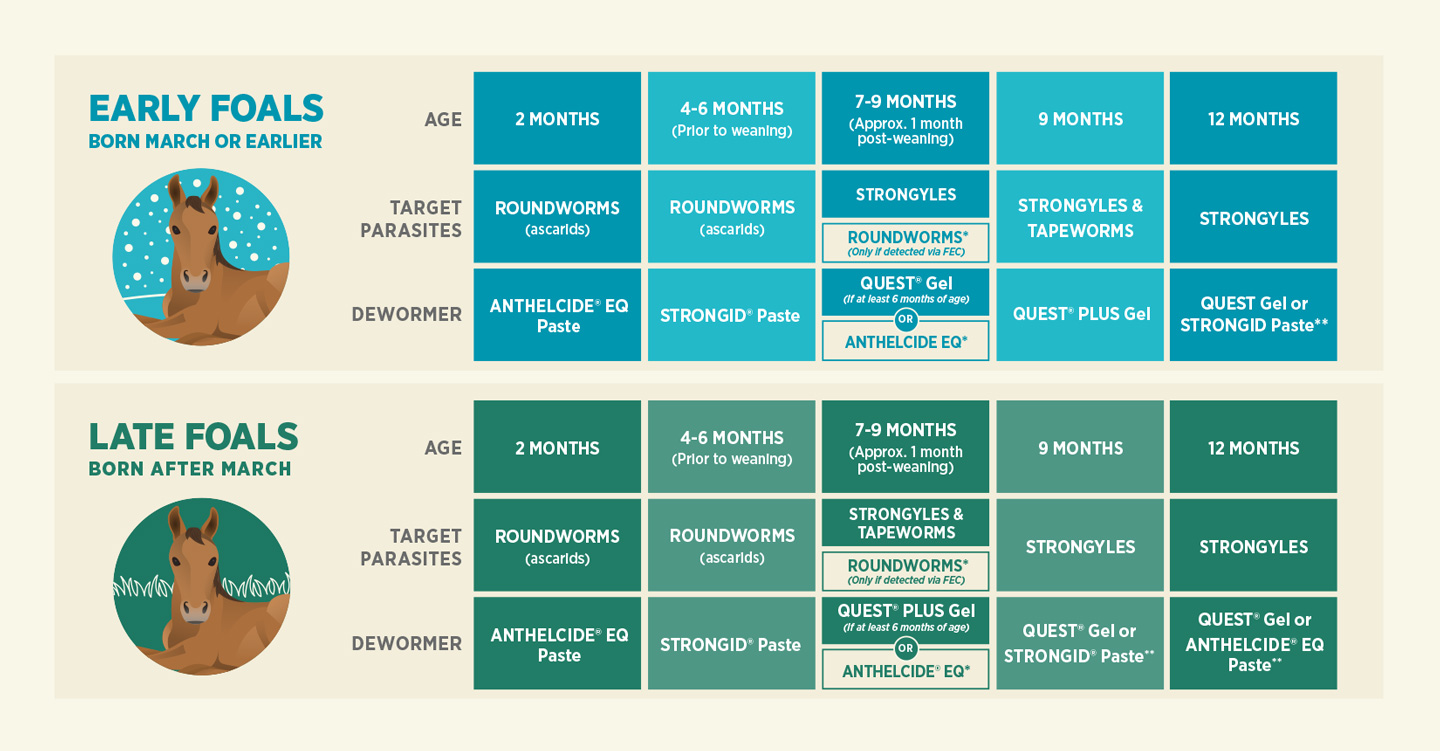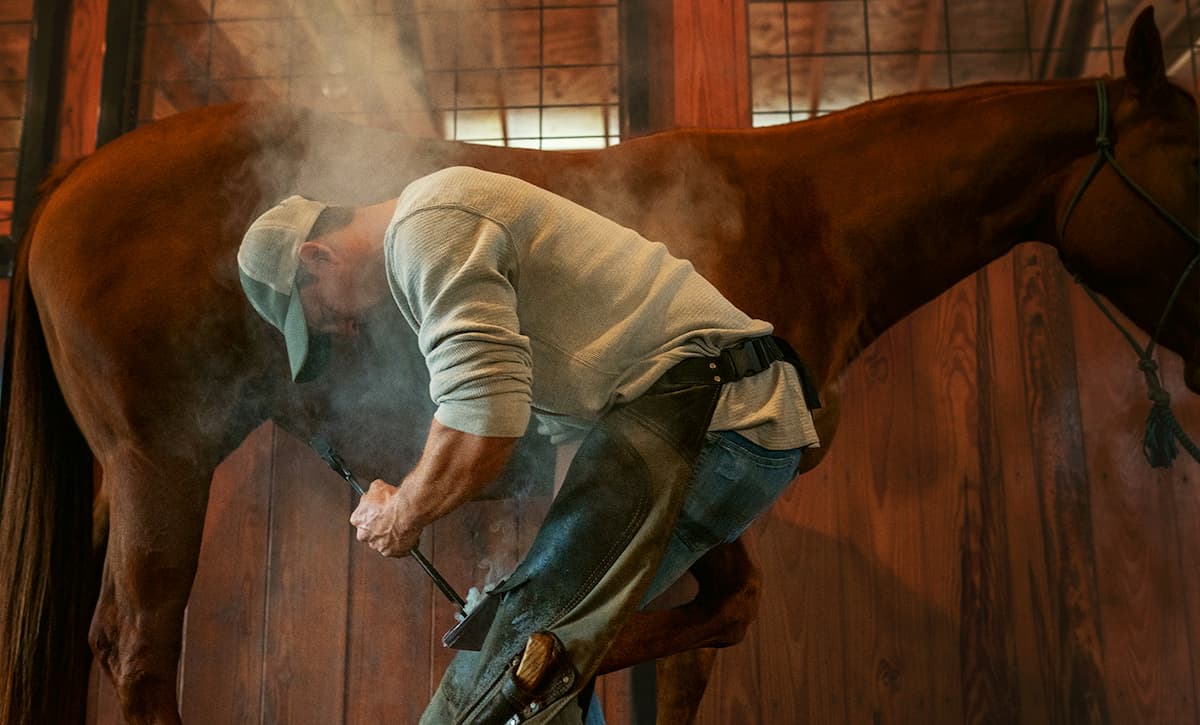Top Tips to Set Your New Foal up for Success
Jacquelin Boggs, DVM, MS, DACVIM, Senior Equine Technical Services Veterinarian, Zoetis
7/25/2024



So, your mare just had a foal—first and foremost, congratulations! We know that many months of solid teamwork and—let’s be honest—a good dose of worry have gone into realizing this miracle. From choosing the sire to preparing your mare for breeding to confirming and monitoring her pregnancy, you and your veterinary team planned it all so carefully and now you have a gorgeous new four-legged family member to brag about.
Of course, the responsibility of rearing this precious newborn is just beginning. But don’t worry, you’ve got this. Even so, never forget that your veterinary team is always your first line of help to ensure your foal's health and well-being, and it takes a village to raise a happy, healthy equine family member. The tips and insights in this blog can be referenced as a care guide for your foal in her first 6 months of life, specifically in months 2 to 6. For foal care tips at birth and for the first few days, check out blog, "Caring for Your Newborn Foal."
The new chapter to ‘Long Live the Horse’ is here! Watch
Zoetis’ Mare & Foal Care solutions video
Start off on the right hoof with newborn diagnostic tests
In prep for newborn foal exams, I typically measure both serum amyloid A (SAA) and Immunoglobulin G (IgG) levels.
1. SAA testing is a valuable diagnostic measure that can help detect infection before other clinical signs appear. At Zoetis, we have a device called the Stablelab® EQ-1 handheld reader that can accurately quantify SAA in 10 minutes.1 If SAA is elevated, it is an early indicator of infection which is helpful to know so that you and your veterinarian can promptly diagnose and treat your newborn foal.
- In fact, SAA has been found to be 30x more sensitive than a thermometer and better than traditional lab tests at detecting subclinical infections2,3
2. IgG testing indicates whether your foal has acquired adequate transfer of maternal antibodies from the mare's first milk called colostrum.
- IgG stands for Immunoglobulin G which are important antibodies to help provide protection to the newborn foal, as foals are born with a naïve immune system
- Maximal IgG absorption occurs up to 6-12 hours of age but some absorption can still occur out to 24 hours. Most veterinarians will hold newborn foal exams 12-24 hours of age.
- If it is determined that the foal has a low transfer of antibodies (low IgG) treatment will include an alternative source of antibodies (either an oral colostrum substitute or intravenous plasma) depending on how many hours it has been since the foal's birth
While the IgG test can determine whether your foal has enough antibodies to support their immune system health (to protect against future infection), the SAA test can identify a potential infection that may require additional diagnostic tests or treatment.
For additional newborn foal exam tips, emergency preparedness and guidance for the first few hours of life, visit the following blog: “Caring for Your Newborn Foal.”
Optimizing growth and development in the first six months
Healthy feeding
Less than 3 months old
By 8-10 weeks of age, the mare's milk alone may not provide adequate nutrition, and the foal will typically start to consume more feed and hay4
4 to 6 months old
By 4 to 6 months of age, most foals will still nurse about 1-2 times per hour, but most of their nutrition will come from consuming hay, grass and supplemental feeds4
Up to 6 months old
Providing good balanced nutrition during the first 6 months of life can have a positive effect on health and soundness for the rest of your foal's life4
Exercise and play in the first six months
Young foals often sleep during the day but should get up to nurse about three to four times an hour. I like to remind clients that it’s important for your mare and foal to enjoy abundant turn out and exercise. One caveat, I’m referring to foals that have no complications—please consult your foal’s veterinarian for physical activity recommendations (especially if there were any issues seen at newborn foal exams).
Basically, the less time foals are confined to stalls, the better. Whenever possible, avoid confining them for more than 10 hours per day. Avoid forced exercise or fatigue. Remember that your foal’s immature bones and joints are still growing and developing. Foals with limb deformities or other musculoskeletal problems may need to have their exercise restricted.
Estimating body weight can be challenging, but it’s important for tracking growth and ensuring you’re using the correct doses of dewormers and other medications
- Ask your veterinarian to estimate your foal’s weight on day one and to show you how you can estimate your growing foal’s weight using a single measurement taken around the girth5
- Be aware that weight tapes designed for mature horses are often not accurate when used on young foals
Did you know?
Your veterinarian can estimate your foal's weight at birth and during physical exams. Foals should be seen at 4-6 months, so this is a great time to estimate weight.
Planning a vaccine schedule
This chart can be a helpful tool to refer to when determining which vaccines your foal will need in the first 6 months. As always, please consult your veterinarian for vaccine and timing recommendations to help prevent your foal from contracting both core and risk-based diseases.
View and download this recommended vaccine schedule for foals and check out a snapshot of it below. The recommendations in this chart are based on the American Association of Equine Practitioners (AAEP) Vaccination Guidelines.6 Your foal initially gets maternal antibodies from the mare, but as they begin to wane, it’s important to help protect your foal from common diseases with the appropriate vaccines. In their first year, foals require several doses of both core and risk-based vaccinations to develop protection.

*Consult your veterinarian to develop a vaccination program to protect your foal.
*Although Fluvac Innovator EHV-4/1 is safe for use in foals 3 months of age or older, efficacy has not been established in foals under 10 months of age.
The ugly ascarid-deworming foals
For the first 6 months of a foal’s life, the lifecycle of the ascarid (roundworm) is oral ingestion from pasture, through the lungs into the GI tract. Therefore, clinical signs associated with ascarid infection can include coughing and other respiratory issues as well as GI signals like colic. Ascarids are the most significant parasite threat to this age group and can restrict your foal’s growth if left uncontrolled.7 The parasite larvae that foals swallow in pasture can also migrate causing coughing and nasal discharge.
The adult worms live in the small intestine and can cause colic, intestinal blockage and even rupture. Below are key takeaways in alignment with the American Association of Equine Practitioners (AAEP):7
- Deworm foals at 2 months of age using Anthelcide® EQ Paste (oxibendazole)
- Deworm at 4 to 6 months of age (typically this is just prior to weaning) using Strongid® Paste (pyrantel pamoate)
- An extra deworming treatment should be included before weaning if the time between the first two treatments is greater than 3 months
- At 6 to 9 months of age, your veterinarian should collect feces for a fecal egg count (FEC) test to determine subsequent dewormers. Your veterinarian can utilize AI-powered FEC testing through Vetscan Imagyst® to gather results in ~10 minutes.8
Target the right parasites at the right time
A targeted approach for controlling parasites depends on when your foal was born. The following chart can serve as a helpful guide:7

*At weaning, ask your veterinarian to conduct a fecal egg count (FEC) test to determine if a final roundworm treatment is needed between 6-9 months of age.
**If verified still effective against small strongyles through fecal egg count reduction test (FECRT).
Do not use Quest® Gel or Quest® Plus Gel in foals less than 6 months of age or in sick, debilitated and underweight horses. Do not use in other animal species, as severe adverse reactions, including fatalities in dogs, may result. Consult your veterinarian for assistance in the diagnosis, treatment, and control of parasitism.
Weaning: The next adventure
Weaning typically happens between 4 and 7 months of age. After 4 months, a mare’s milk alone does not provide enough nutrition for growth, and most foals are happy eating hay and grain on their own. The first step in the weaning process is to ensure that your foal is eating good quality hay and is comfortable eating a well-balanced ration that supports rapid growth.9
There are a variety of effective weaning methods, but most typically fall into three camps (gradual, abrupt and intermittent).10 It’s a great idea to bring this up as a topic of discussion with your veterinarian to gather their recommendation based on your foal’s health history.
Hoof care: Putting a best hoof forward
Unless your veterinarian recommends earlier treatment, most foals should have their first careful hoof rasping scheduled at 1 month of age and monthly thereafter.11 The goal of regular hoof care is to promote the growth of a strong hoof wall, a thick protective sole and a solid heel. These three structures are vital for future athletic soundness.
Managing those pearly whites
Sometime between birth and approximately 2 weeks of age your foal should have erupted their first baby teeth. If you gently lift the top lip, you’ll see the four front teeth (including top and bottom, left and right, and the first incisors). The next four incisors will appear at about 4 to 6 weeks of age, and then the final four at 6 to 9 months of age.12,13
Your veterinarian will examine the head, mouth and teeth shortly after birth and again at about 3 months of age. This will allow you to identify any oral problems early enough that they can be managed properly to ensure your developing foal can nurse and eat properly. If you notice your foal having any problems eating or swallowing, be sure to let your veterinarian know.
Concluding thoughts
As your foal heads into the stretch leading up to her first birthday (and yearling-hood), you’ve already set a solid foundation for her care. The second year of life marks another important milestone for your young horse, we recommend visiting; ZoetisMareAndFoal.com for routine care tips tailored to this age group. Here’s to the many nose nudges and moments to simply be present as you witness her growing up and showing more of her little (or rather big!) personality each day.
Relevant reading
References
- Validation Data On File TI-04856.
- Oertly M, Gerber V, Anhold H, et al. The accuracy of serum amyloid A in determining early inflammation in horses following long-distance transportation by air. Swiss Institute of Equine Medicine. 2019. Accessed May 13, 2024.
- Belgrave, R. et al. Assessment of Serum Amyloid A testing of horses and its clinical application in a specialized equine practice. JAVMA, Vol 243 no 1, July 1, 2013. Pages 113-119.
- American Association of Equine Practitioners. Foal growth: Special care and nutrition. https://aaep.org/horsehealth/foal-growth-special-care-and-nutrition. Accessed March 19, 2024.
- Rodríguez C, Muñoz L, Rojas H, Briones M. New formula for bodyweight estimation of Thoroughbred foals. Vet Rec. 2007; 161(5): 165-166.
- The American Association of Equine Practitioners. Vaccination Guidelines. Available at https://aaep.org/guidelines/vaccination-guidelines. Accessed March 19, 2024
- American Association of Equine Practitioners. Developed by the AAEP Parasite Control Subcommittee. Parasite control guidelines. https://aaep.org/sites/default/files/Guidelines/AAEPParasiteControlGuidelines_0.pdf. Accessed March 23, 2024.
- Data on file, Study No. DHX6Z-US-22-131, 2022, Zoetis Inc.
- Oklahoma State University Extension: Weaning and management of weanling horses. https://extension.okstate.edu/fact-sheets/weaning-and-management-of-weanling-horses.html. September 1, 2020. Accessed May 13, 2024.
- Lansade L, Foury A, Reigner F, et al. Progressive habituation to separation alleviates the negative effects of weaning in the mother and foal. Psychoneuroendocrinology. 2018;97:59-68. DOI: 10.1016/j.psyneuen.2018.07.005.
- Utah State University Extension. Foal hoof care, when and how often to trim? https://extension.usu.edu/equine/research/foal-hoof-care#:~:text=The%20foal%20should%20have%20its,modify%20a%20deviated%20boney%20column. Accessed May 13, 2024.
- Utah State University Equine Extension. Aging horses by their teeth. https://extension.usu.edu/equine/research/aging-horses-by-their-teeth#:~:text=Foals%20are%20born%20either%20without,incisors%20by%20about%208%20months. May 1, 2020. Accessed May 13, 2024.
- EquiMed Horse Health Matters. Aging a horse by its teeth. https://equimed.com/health-centers/dental-care/articles/aging-a-horse-by-its-teeth. April, 26, 2017. Accessed May 13, 2024.
All trademarks are the property of Zoetis Services LLC or a related company or a licensor unless otherwise noted.
© 2024 Zoetis Services LLC. All rights reserved. GEQ-01224
 Visit veterinary professionals site
Visit veterinary professionals site







